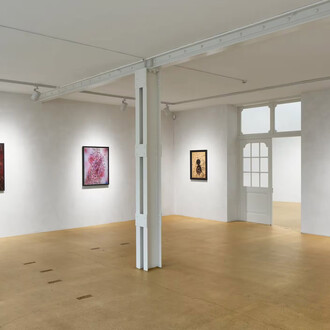For the first time, a Paul Klee exhibition provides a glimpse of the relationship between humans and animals. Then and now, our dealings with animals are diverse and contradictory. Animals are feared, trained, pampered or slaughtered. Paul Klee thought intensely about the roles and nature of animals and human beings and commented critically upon their qualities. Join Paul Klee in exploring the animal in humanity and the human side of animals!
In every phase of his work Paul Klee took an interest in animals. In his view, the study of nature was one of the central principles of artistic creation. For that reason he collected seaweed, snail shells and sea-shells and displayed them in his studio. As a precise observer, he often discovered the animal in human beings, and the animal in human beings, and reversed the traditional roles. In his works humans ‘turn animal’, while animals display human traits. He commented on political events with animal fables, and zoological scenes humorously show us human behaviour.
Birds and fish assume a special place in Klee’s bestiary. They exerted a particular fascination on him because unlike humans, who are bound to the earth by gravity, they can move completely freely in air or water. This gives them their own territories which are difficult for humans to access.
Klee’s cats occupied a central place not only in his life, but also in his work. He tried to immortalize his favourite animals in over 50 works and more than 250 mostly blurred photographs. In letters to his wife Lily he regularly had his cats Fritzi and Bimbo pass on ‘pawprints and coldwet nose-kisses’. Apart from that Klee’s zoos are populated by fantastical inventions of hybrid creatures like the doubletail-three-ears, mythological sphinxes and ungainly urchses.
The exhibition brings together some 130 works from the holdings of the collection of the Zentrum Paul Klee, many of which are being shown for the first time. Loans from Bern Natural History allow the public to engage in the immediate study of animals on Klee’s traces.





![Gego, Bicho 89/17 [Bug 89/17], 1989. Courtesy of Zentrum Paul Klee](http://media.meer.com/attachments/f079a1f4646d2c18046e435b0d7c6a40c4d590ab/store/fill/330/330/15240f8a7c2620c149272c56d3458458d719746e821a8c6a92e906b56287/Gego-Bicho-89-slash-17-Bug-89-slash-17-1989-Courtesy-of-Zentrum-Paul-Klee.jpg)



![Ernst Ludwig Kirchner, Sonntag der bergbauern [Mountain peasants
on sunday] (detail), 1923-24/26. Courtesy of Kunsthalle Bern](http://media.meer.com/attachments/20a8137ccad773c13862ccdfc875e8e9140e882a/store/fill/330/330/2b752c5aa2aa5dd58dbb48294877d0648612d2f7494bb2ea5052c0c3ef43/Ernst-Ludwig-Kirchner-Sonntag-der-bergbauern-Mountain-peasants-on-sunday-detail-1923-24-slash-26.jpg)
![Arnold Böcklin, Meeresstille [Calm sea], 1887. Courtesy of Kunstmuseum Bern](http://media.meer.com/attachments/31f0fbf5fc85bf4c4f3420830f31c3f397dc0c0a/store/fill/330/330/9f1e7907383dd5889d45b340467c7e560675e5ed70f1c887e82a3da16e45/Arnold-Bocklin-Meeresstille-Calm-sea-1887-Courtesy-of-Kunstmuseum-Bern.jpg)





